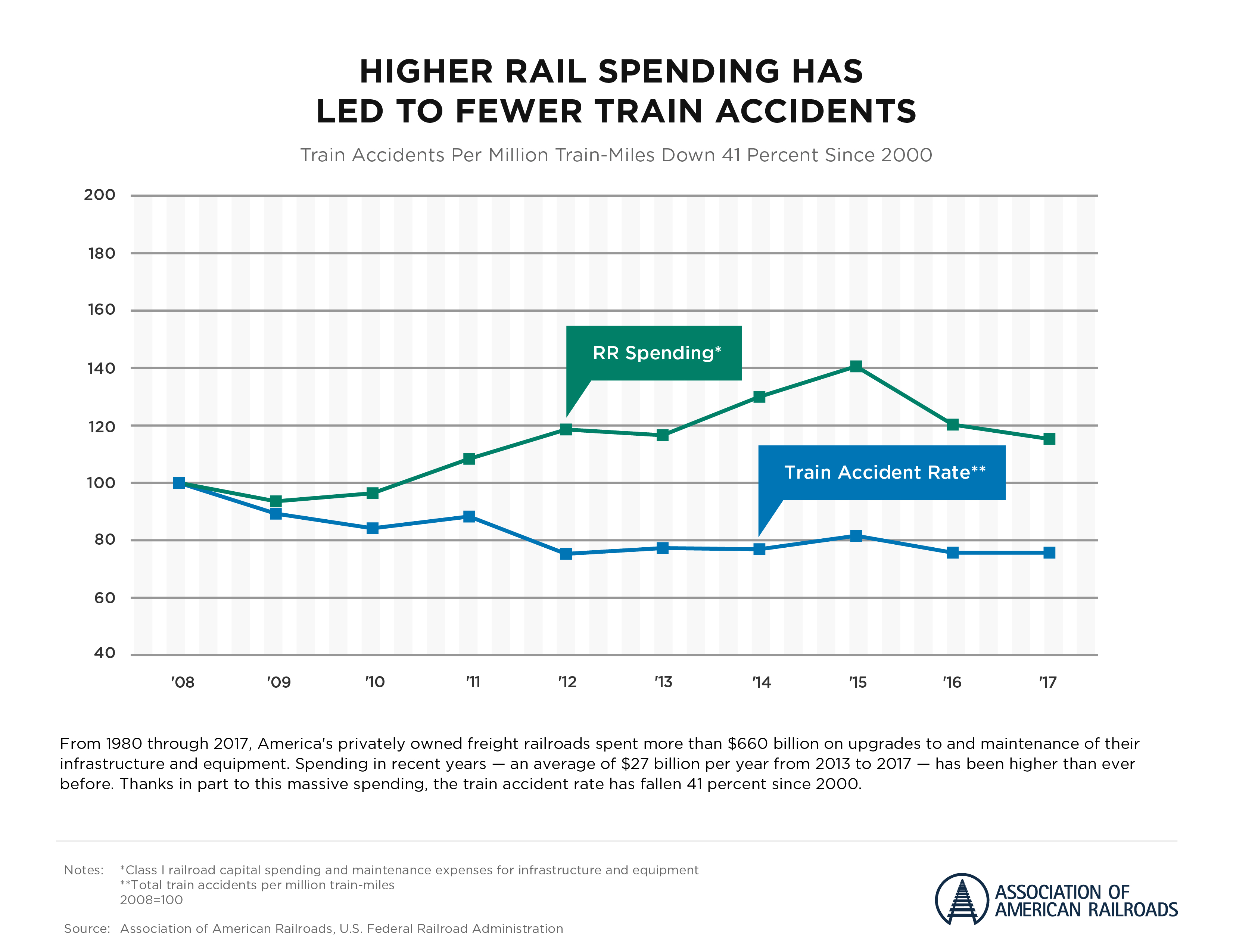According to new data from the Federal Railroad Administration (FRA), U.S. railroads set multiple safety records in 2016, including the industry’s lowest train accident rate ever. Derailment rates and accidents caused by track flaws also reached all-time lows. These safety achievements continue a string of record-setting years for freight railroads and are a testament to how seriously the industry takes its goal of an accident-free future.
How are railroads achieving such sustained safety success? By pioneering groundbreaking technology and investing billions of dollars in a 21st century network. Here are just a few of the many safety technology initiatives being employed by railroads:
Innovative “Ears”
For years, freight railroads have used ultrasound technology to look inside a track and determine its health, the same way that a doctor determines the health of a human body. These track “check-ups” have helped railroads identify invisible imperfections before they pose a danger to trains. While ultrasound technology has proved effective, freight rail researchers recently questioned whether they could improve safety even further by listening– not just looking – for track imperfections.
As a train travels over any segment of track, energy is transmitted from the train through the track and into the ground below. This energy can be measured as a series of sound waves, collectively known as an acoustic signature. The acoustic signature of a track is different depending upon the health of the track.
In 2013, scientists installed fiber-optic cable alongside a test track at the industry’s test facility in Colorado, and began listening to the track’s acoustic signature as trains repeatedly ran overhead. The track was designed to break, and when it did, the experts had the data they needed. Specifically: the acoustic signature of a healthy track, the acoustic signature of a broken one, and the acoustic signature of a track on the verge of breaking.
Now, researchers are diving into this data with the hope of being able to monitor tracks across the country and detect safety issues in real-time, including deteriorating tracks, failing brakes and even rogue trespassers walking along the rails.
Sci-Fi “Eyes”
Railroads are also taking to the skies and mastering technologies once found only in the pages of science fiction novels.
Two years ago, BNSF Railway flew unmanned aerial vehicles, or drones, mounted with high-definition video cameras over tracks in parts of Texas and Oklahoma that had been swamped by floodwaters. Safety experts monitored the drones’ video feeds to see precisely where rail tracks had been washed away and examine the condition of rail bridges, some of whose foundations had been slammed with debris. By pinpointing the location of the damage, BNSF was able to safely deploy employees as soon as the floodwaters receded and quickly return the rail line to safe operation.
Today, Class I railroads across the nation are deploying drones for a variety of safety and environmental purposes. In remote areas, drones are being employed to explore thousands of miles of track to ensure that freight trains continue to safely traverse such unforgiving terrain. Drones are also being used to test air quality to ensure compliance with federal and state environmental regulations and for the inspection of bridges and telecommunications infrastructure.
Aided by Investments
High-tech innovations and accompanying safety gains have only been possible because of nearly four decades of massive private investment by the freight rail industry. Since Congress established a balanced regulatory environment in 1980, freight railroads have been able to spend more than $635 billion to improve the safety and efficiency of the nation’s rail network. That spending has gone hand-in-hand with a 44 percent decline in the rate of train accidents since 2000.

In recent years, freight railroads have continued to spend an average of $26 billion per year improving the safety and performance of the network. However, such investments – and the innovations that result – are only possible through effective federal agency partnerships, and the freedom to achieve improved safety with the technologies developed, and insights gained, from the industry’s innovative research. Whether it’s fiber optic cables buried underground or drones flying overhead, America’s freight railroads are committed to innovating and investing in a safer, accident-free, future.
Article from AAR Railroad 101 (formerly Freight Rail Works)